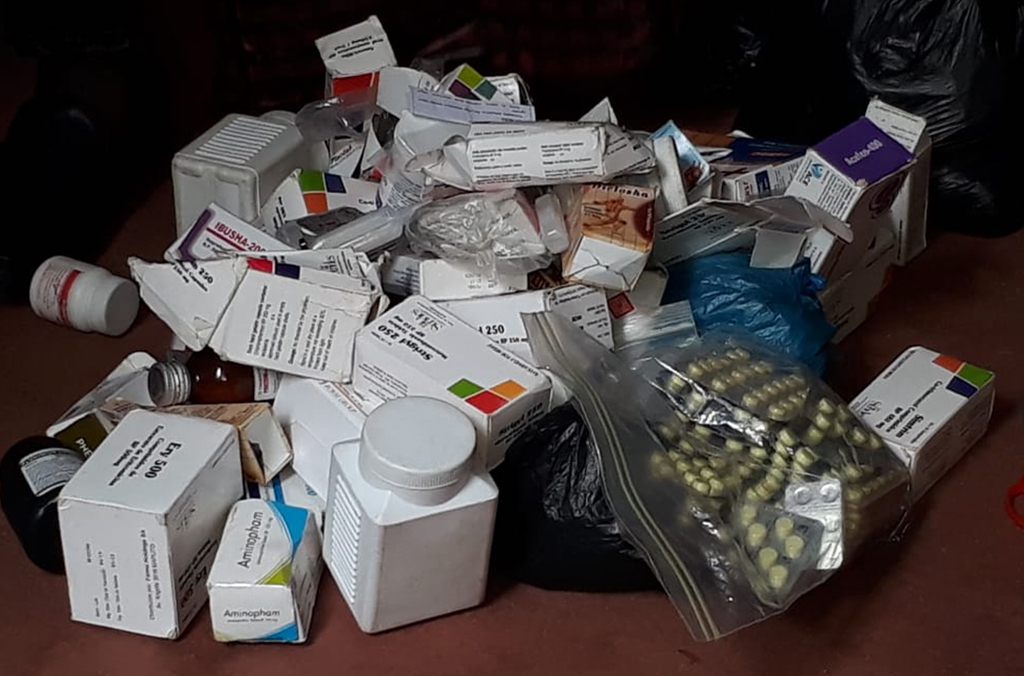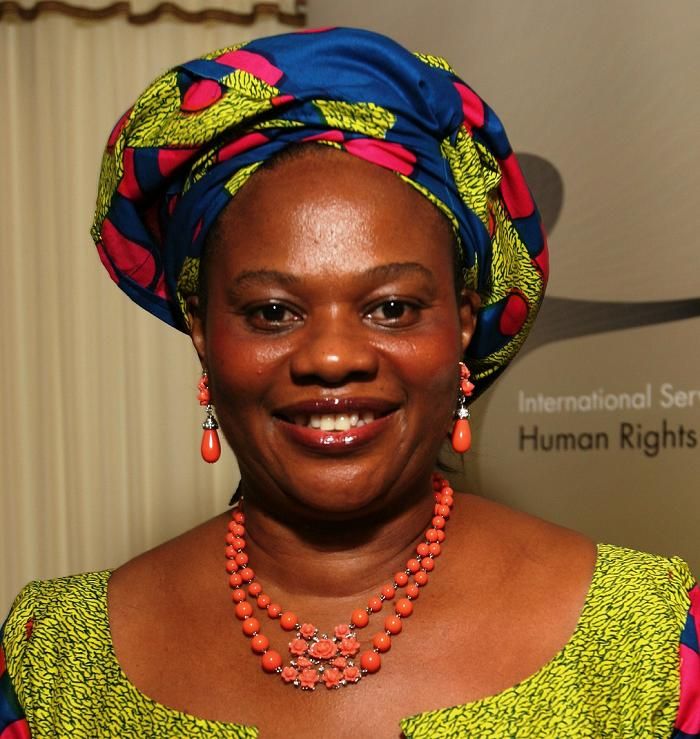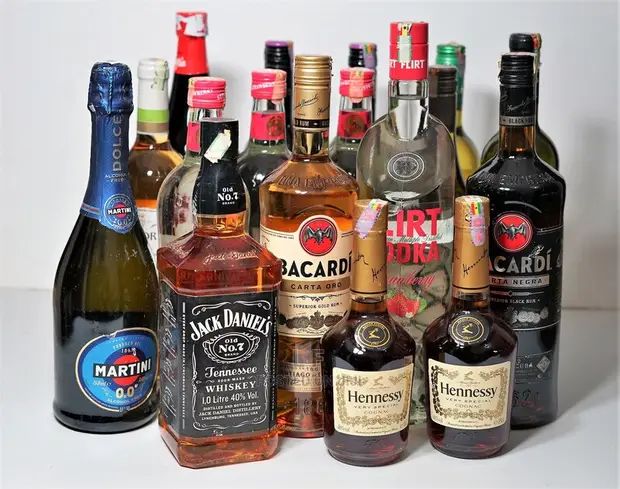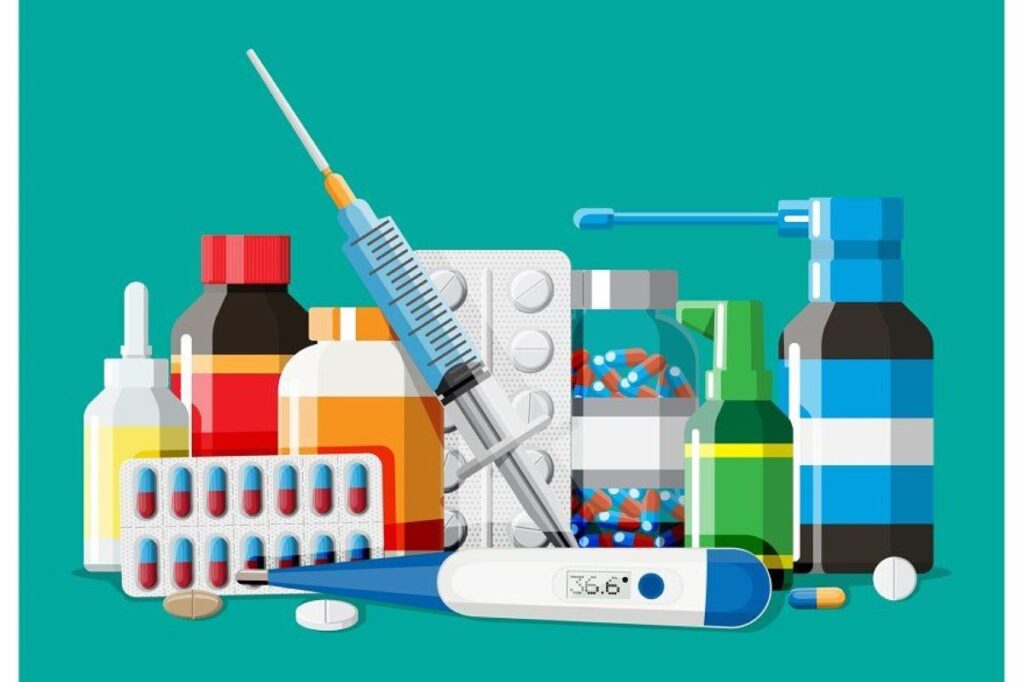“What if the medicine or drink in your cart is the poison that kills you?”
For millions of people in Nigeria, this is the stark reality they deal with daily. Buying a drug from the pharmacy or a Coca-Cola to enjoy with that plate of jollof rice can send one to an early grave. And this is all because of fake drugs and drinks that have infiltrated the market.
Counterfeit pharmaceuticals and drinks are a silent epidemic that has plagued Nigeria for years. The two are the result of a thriving black market that harms public health and fosters mistrust in locally produced commodities. A fake antimalarial or antibiotics can lead to treatment failure and increase drug resistance.
But with the high price of drugs and healthcare due to the economic crisis in the country, they became default doctors, pharmacists, and clinics for millions of Nigerians who could not afford the expensive foreign drugs.
Adulterated alcoholic drinks laced with methanol can lead to blindness, kidney failure, and death. The consequences of consuming fake drugs and drinks are all-encompassing, which is why the National Agency for Food and Drug Administration and Control (NAFDAC) has launched campaigns and fought to rid Nigeria of this threat.
However, the problem persists, as the network of adulterated drugs and drinks is like a hydra; you cut one off, and several others take its place. In this article, we’ll take you through the long-standing war against counterfeit drugs and drinks in Nigeria, beginning with how counterfeits originated in the country, and then exploring the ripple effects they have on Nigeria and its citizens.
The Origin of Fake Drugs and Drinks: The 1970s to 80s, When the Borders Opened
Long before the NAFDAC was founded, in the 1970s and 1980s, the foundation for the adulterated drugs and drinks market was laid. Known as Nigeria’s golden period, the 1970s brought unprecedented wealth, but the 1980s saw the collapse of that wealth.

During the 1970s, Nigeria became a country that imported virtually everything. If an item was not “Made in Europe” or “Made in America,” it was not considered of high quality. However, with the oil price crash in the 1980s and the economic problems the country faced, things took a drastic turn.
Imported goods became more expensive, and local manufacturers could barely survive. Even foreign companies that produced high-quality drugs in Nigeria closed shop and left the country. All these created a massive vacuum as:
- Nigerians still wanted foreign medicine
- Imported drugs became increasingly expensive because of the naira devaluation
- The newly opened borders and deregulated ports were not adequately regulated.
As a result, the black market had a fertile ground to thrive. To achieve this, they utilized Patent Medicine Vendors (PMVs) or chemists (pharmacists). The PMVs used to sell pre-packaged, over-the-counter drugs from manufacturers. They were legal but had no formal pharmaceutical training.
But with the high price of drugs and healthcare due to the economic crisis in the country, they became default doctors, pharmacists, and clinics for millions of Nigerians who could not afford the expensive foreign drugs. These chemists primarily served rural communities and low-income households in urban areas.
They bought high-demand drugs for cheap from the black market traders and sold them to sick patients who can’t afford the original, more pricey drugs. Those who purchased the drugs soon discovered that the drugs were ineffective, and in the worst cases, some people died.
So, rather than drugs that did not work, Nigerians had to deal with drugs that had become poison. And the worst part was that neither doctors nor chemists could distinguish between the real and fake.
A classic example of how this played out is the Chloroquine Crisis in the 1980s. At the time, Chloroquine was the primary drug for treating malaria, and was in high demand. The black market traders saw this as an opportunity and flooded chemist shops with fake Chloroquine.
The fake drug contained chalk, starch, and a small, useless fraction of the active ingredient. The drug also had the bitter taste of the original Chloroquine, which helped to fool chemists and patients. The result was catastrophic as many died, including children.
Also, since the drug contained some active ingredient, but not enough, it could not kill the malaria parasite, leading to Chloroquine resistance. Since there was no regulatory body in place, the counterfeiters went unpunished. But things will soon take a turn with the establishment of NAFDAC in 1993.
The Turning Point: The 1990s Paracetamol Scandal and NAFDAC’s Formation
Before the creation of NAFDAC, the counterfeit market had grown larger, bolder, and more daring, all in an effort to maximize profits. The drugs were not being manufactured in Nigeria alone, but imported from different countries using the easily penetrable ports of West Africa.
Unlike the fake Chloroquine that was made with starch and chalk, the ingredients evolved to be more toxic. So, rather than drugs that did not work, Nigerians had to deal with drugs that had become poison. And the worst part was that neither doctors nor chemists could distinguish between the real and fake.
Soon, the influx of fake drugs became a national emergency, but it was the 1990 paracetamol syrup scandal that shook the nation. That year, over 100 children died after taking phony paracetamol syrup. The drug did not contain paracetamol but a cheap industrial solvent, diethylene glycol, also known as antifreeze.
Every drug shipment must go through regulated ports where NAFDAC will conduct mandatory inspections.
Headlines were filled with stories of children dying, and since the drug was sold over the counter, the trust between the public and chemists broke. There was pressure on the government to take action, and in January 1993, it established the regulatory agency, NAFDAC.
However, NAFDAC could not accomplish as much as it was understaffed, underfunded, and lacked real government backing. Additionally, the agency had to contend with corruption and a smuggling network that had more resources and workforce at its disposal. The problem was worsened by the fact that corrupt officials protected the counterfeiters.
But again, things will not stay this way forever. NAFDAC soon got a fearless leader, Professor Dora Akunyuli, a university pharmacist who lost her sister in 1988 to fake insulin.
The Akunyili Revolution: 2001–2008
Professor Dora Akunyili was appointed in 2001 by President Olusegun Obasanjo to head NAFDAC as the Director-General. He couldn’t have made a better choice, as Prof. Akunyili has experienced firsthand the effects of fake drugs. As mentioned, she lost her sister to adulterated insulin.

So, with her new position, she began an unforgettable crusade against counterfeiters and the fake drugs import cartel. Prof. Akunyili was at the frontlines in the war against counterfeit drugs. Backed by the military and police, she raided fake drug strongholds, including the infamous Bridge Head Market in Onitsha, Anambra State.
Before the raid, the market was considered untouchable, but Prof. Akunyili would not be deterred. She also raided and shut down drug markets in Idumota, Lagos State, and Kano. NAFDAC officials seized and publicly destroyed counterfeit products worth billions of Naira.
Prof. Akunyili did not stop with the raids. She knew what needed to be done to address the problem at its root. She introduced:
Stricter Controls
Prof. Akunyili banned the importation of drugs through all borders. Every drug shipment must go through regulated ports where NAFDAC will conduct mandatory inspections.
Public Awareness Campaigns
The NAFDAC director launched a massive, nationwide media campaign. People were educated about fake drugs and their dangers, how to identify fakes, and where to file a report. The campaign was on TV, radio, and newspapers, making NAFDAC a household name and an organization that people trusted to keep them safe.
The Cartels Fought Back
Prof. Akunyili’s actions were damaging to the cartels. They lost billions of dollars and retaliated with violence, constantly trying to silence Prof. Akunyili. Some of the known attacks she suffered include setting her office on fire, open threats, and attacking her convoy in 2003.
The idea was revolutionary for its time and aimed to empower the consumer. Essential drugs, such as antibiotics and antimalarial tablets, were packaged with scratch-off panels.
A bullet grazed her headscarf, but she survived the assassination attempt. She is quoted to have boldly declared, “If I die, let it be in this fight.” Talk about a fearless woman. By 2008, when she was stepping down as director, NAFDAC reported it had reduced fake drug circulation by over 80%.
Prof. Akunyili had restored the public’s hope in the medical system and chemists, and for her work, she got international recognition and awards.
After Akunyili: The Evolving Battle (2009–2020s)
After Prof. Akinyuli left NAFDAC, the war continued, and the counterfeiters evolved. The counterfeiting cartel leveraged technology to expand its business and discover new markets. Thus, a high-stakes game of cat and mouse began.
Not to be outdone, NAFDAC introduced a tech-based solution in 2010 called the Mobile Authentication Service (MAS). The idea was revolutionary for its time and aimed to empower the consumer. Essential drugs, such as antibiotics and antimalarial tablets, were packaged with scratch-off panels.

When consumers purchase the drugs, they can scratch off the panel to reveal a PIN that corresponds to a shortcode, confirming the authenticity of the medicines. The system initially worked effectively, but counterfeiters soon caught up with it.
Although they could not break the MAS system, they bypassed it by doing the following:
- Faking the “Fakeproof”: The counterfeiters printed their own counterfeit scratch panels. Consumers would scratch the code, text the fake number, and receive an “OK” message.
- Cloning Everything: Counterfeiters copied NAFDAC numbers, drug packaging, holograms, and later, QR codes. This made it impossible for the average person to distinguish between the real and the fake.
- Shifting Markets: The counterfeiters also shifted their focus to beverages and other consumables, as NAFDAC was primarily focused on drugs. The profit margins were just as high, and the public was least suspecting.
The shift by the counterfeiting cartel marked the beginning of a new fight with NAFDAC. The problem was not only in chemists and hospitals, but also in markets, bars, corner shops, and even among hawkers on the road.
The Modern Expansion Into Fake Drinks
The expansion by the cartels into consumables, mainly drinks, began in the 2010s and came to a head in the 2020s. Instead of just fake drugs, NAFDAC now had to deal with:
- Adulterated Wines and Spirits: Illegal manufacturers at Eziukwu (Cemetery) Market in Aba were refilling premium bottles of spirits, Hennessy and Jameson. They used locally concocted spirits, dyes, and unhygienic water.
- Fake Juices and Soda: Products like Coca-Cola and fruit juices were not spared. In 2021, 10 people died and hundreds were hospitalized after drinking fake juice during Ramadan.
The growth of adulterated drinks in the 2020s is similar to that in the 1980s, when Nigerians faced severe economic hardship and opted for cheaper products. History shows that when there is a vacuum and everyday people cannot afford the original version of a product, they opt for the more affordable version.
However, most of them are unaware of the dangers of those cheaper versions, as the cartels market them as a safe and more affordable alternative that tastes like the original. This is where NAFDAC comes in.
It has led to an increase in cases of acute kidney and liver failure in people who were healthy until they consumed the adulterated drink or drugs.
The agency has intensified the fight against fake drugs and drinks, and in 2023, it conducted another historical raid at the Eziukwu (Cemetery) Market in Aba. According to the NAFDAC Director-General, Professor Moji Christianah Adeyeye, the market is the “epicenter of counterfeiters” in the South-East.
The market has over 240 shops, which were converted into factories where counterfeit consumables, ranging from Campari to baby formula, were produced. NAFDAC has also raided other counterfeiting hubs in Ojo, Lagos, and Ota, Ogun State. The agency seems not to be relenting in its fight to keep markets free of counterfeiters and Nigerians safe. But sadly, despite NAFDAC’s efforts, the effects of fake drugs and drinks are far-reaching.
The Ripple Effect — Health, Economy, and Trust
The counterfeiting industry has had a profound impact on healthcare, the country’s economy, and public trust in the pharmaceutical industry.

The Health Crisis Caused By Fake Drugs and Drinks
Consuming fake drugs and drinks will undoubtedly have a brutal impact on the human body. This manifests in two ways:
- Direct Poisoning: The use of industrial solvents, such as methanol and diethylene glycol, in drinks and syrups can lead to poisoning. It has led to an increase in cases of acute kidney and liver failure in people who were healthy until they consumed the adulterated drink or drugs.
- The Superbug Factory: Fake drugs often contain a trace amount of active ingredient or none at all. What this does is create a resistance to the drug. So, assuming you buy a fake antibiotic with only 10% active ingredient, which is not enough to kill the bacteria. The drug might eliminate the weak bacteria, while the strong ones stay alive, learn to resist the drug, and multiply.
This is why Nigeria has become a hotspot for antimicrobial resistance (AMR) in recent years. The drugs that were once effective for treating typhoid, pneumonia, and simple infections are no longer effective because of drug-resistant superbugs, which are more deadly than the original illness.
The Economic Impact
The counterfeiting cartels are the only ones who benefit financially from their product. The country does not help, as these counterfeiters do not pay tax. Also, the pharmaceutical industry loses billions of Naira yearly in direct sales and suffers an impact on its brand image. Consumers are less likely to purchase a product that has several counterfeit versions available on the market.
Additionally, the country loses its export power. For example, due to the proliferation of fake drugs, Ghana and Sierra Leone have repeatedly issued alerts warning their citizens about fake drugs from Nigeria. This damages the country’s image and reduces exports.
Can Nigeria ever be free of fake drugs or drinks? Can people trust that the product they purchased to cure them will not be what kills them? There is no definitive answer.
Furthermore, fake drugs deter investment from international pharmaceutical companies. No company will be willing to spend millions of dollars investing in a country where it will compete with an illegal, tax-free, and unregulated black market and lose money.
The Broken Public Trust
Ultimately, all these lead to broken public trust and fear. When a mother buys medicine from a pharmacy and her child’s fever worsens, who does she blame? The doctor? The pharmacist? The drug itself?
Who will be held accountable? The doctor and the chemist might have been unaware of this. There’s also the fact that people are required to pay more for healthcare than they would have if the initial treatment had been effective.
Some patients may question the competence of medical professionals and turn to herbs and traditional healers whose methods may not be reliable. This is why we stated that the effects of counterfeit medicines are all-encompassing, and why NAFDAC must continue to pursue the perpetrators until they are brought to justice.
The Fight Against Counterfeit Drugs and Drinks Continues
The fake drugs and drinks crisis in Nigeria has evolved through the years. The more NAFDAC fights, the more the counterfeiting cartel pushes back. Whether it’s the era of Prof. Dora Akunyili or the current NAFDAC director, the fight continues, and those at the frontlines must never relent.
Can Nigeria ever be free of fake drugs and drinks? Can people trust that the product they purchased to cure them will not be what kills them? There is no definitive answer. However, as long as NAFDAC continues to push back and the government imposes stricter import bans and punishments for offenders, the availability of these counterfeit products can be drastically reduced, if not completely eliminated.
What do you think? Can fake drugs and drinks be eradicated from Nigeria? Let us know in the comments.
References and Further Reading:
- 1 in 10 Medical Products in Developing Countries Is Substandard or Falsified
- NAFDAC Bursts Large Hauls of Fake Wines, Soft Drinks, and Consumables
- Nigeria Has a Long, Sad History With Counterfeit Drugs
- Drug Warrior
- Counterfeit Drugs in Nigeria: A Threat to Public Health
- Indomitable Woman in the Front Line of the Other War on Drugs
- NAFDAC Slams Attack on Officials at Lagos Trade Fair
- NAFDAC Shuts 150 Shops in Abia Market
- Press Briefing on NAFDAC’s Regulation and Control of Sub-Standard Falsified Medicines


